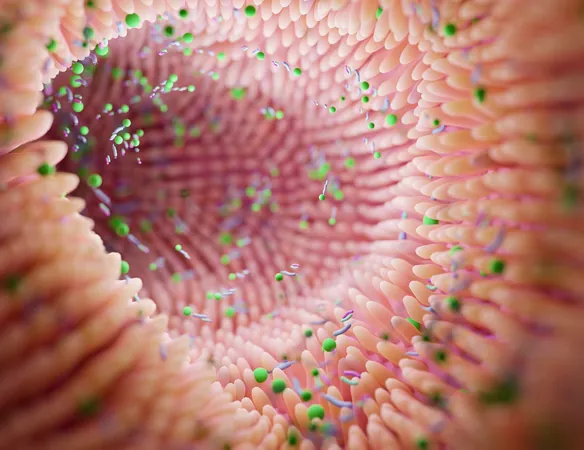
Revolutionizing Space Science: New Method for Analyzing Organic Compounds in Extraterrestrial Samples
2025-08-29
Author: Yu
Unlocking the Secrets of Extraterrestrial Life
Understanding the origins and chemical processes of life beyond Earth is a monumental quest for scientists. Recent advances in technology are paving the way for groundbreaking research in this field. One of the most exciting developments comes from an innovative Orbitrap-based method that allows for precise nitrogen isotope analysis of amino acids found in extraterrestrial samples.
The Challenge of Analyzing Low-Concentration Organics
Traditionally, the analysis of isotopic compositions in organic compounds, like amino acids, required large amounts of sample material, often in grams. This posed a significant hurdle, especially when studying low-concentration organics present in meteorites and other celestial materials. The new Orbitrap method, however, overcomes this limitation.
Game-Changing Precision with Minimal Material
This groundbreaking technique can now determine nitrogen isotopic values from as little as 150 picomoles of sample, achieving an impressive precision of 3% to 8%. Validation tests using amino acid enantiomer standards and samples from the famous CM2 Murchison meteorite confirmed its accuracy, which falls within a mere 2% of traditional elemental analysis.
A New Era for Prebiotic Chemistry and Contamination Studies
The implications of this research are profound. The Orbitrap method not only enhances our ability to trace the origins and synthetic pathways of amino acids but also provides crucial insights into prebiotic chemistry. It sheds light on potential abiotic processes that may have contributed to organic compound formation in the early solar system.
Enhancing Reliability in Space Sample Analysis
Nitrogen isotopes are vital for differentiating biological from non-biological sources, significantly aiding in contamination detection within meteoritic samples. This advancement could revolutionize how we analyze rare extraterrestrial materials, elevating the reliability of findings and propelling our understanding of life's chemical precursors in space.
Conclusion: A Leap Forward in Astrobiology
With the introduction of this sophisticated Orbitrap mass spectrometry technique, researchers are equipped with a powerful new tool that opens up exciting possibilities in astrobiology and astrochemistry. As we continue to explore the cosmos, such innovations will help us unearth the mysteries of life beyond Earth and perhaps find clues to our own origins.


 Brasil (PT)
Brasil (PT)
 Canada (EN)
Canada (EN)
 Chile (ES)
Chile (ES)
 Česko (CS)
Česko (CS)
 대한민국 (KO)
대한민국 (KO)
 España (ES)
España (ES)
 France (FR)
France (FR)
 Hong Kong (EN)
Hong Kong (EN)
 Italia (IT)
Italia (IT)
 日本 (JA)
日本 (JA)
 Magyarország (HU)
Magyarország (HU)
 Norge (NO)
Norge (NO)
 Polska (PL)
Polska (PL)
 Schweiz (DE)
Schweiz (DE)
 Singapore (EN)
Singapore (EN)
 Sverige (SV)
Sverige (SV)
 Suomi (FI)
Suomi (FI)
 Türkiye (TR)
Türkiye (TR)
 الإمارات العربية المتحدة (AR)
الإمارات العربية المتحدة (AR)